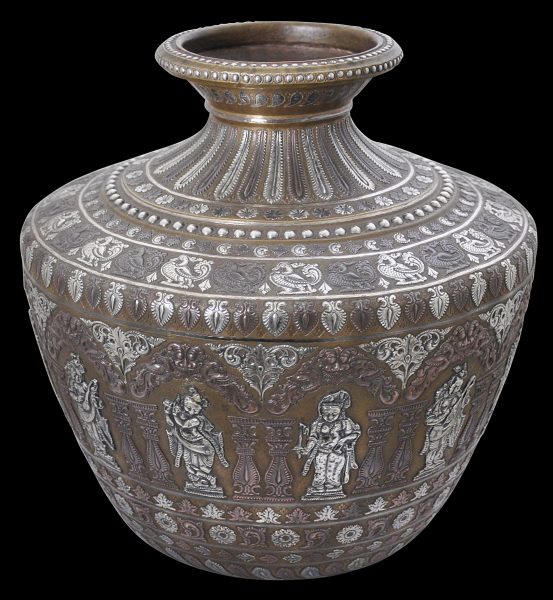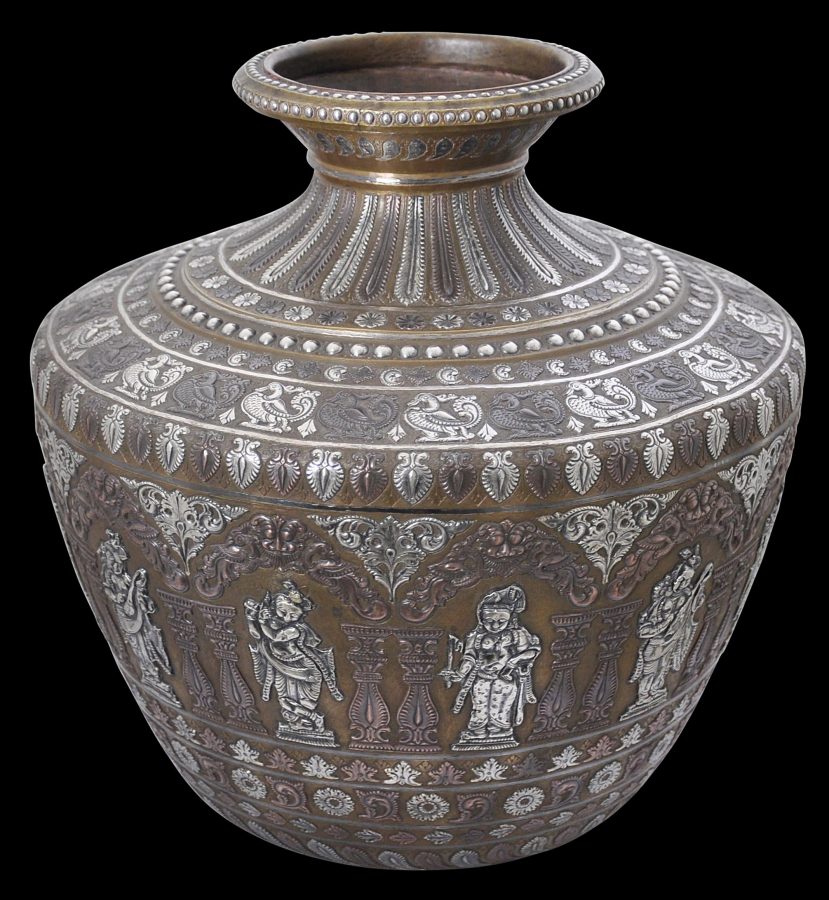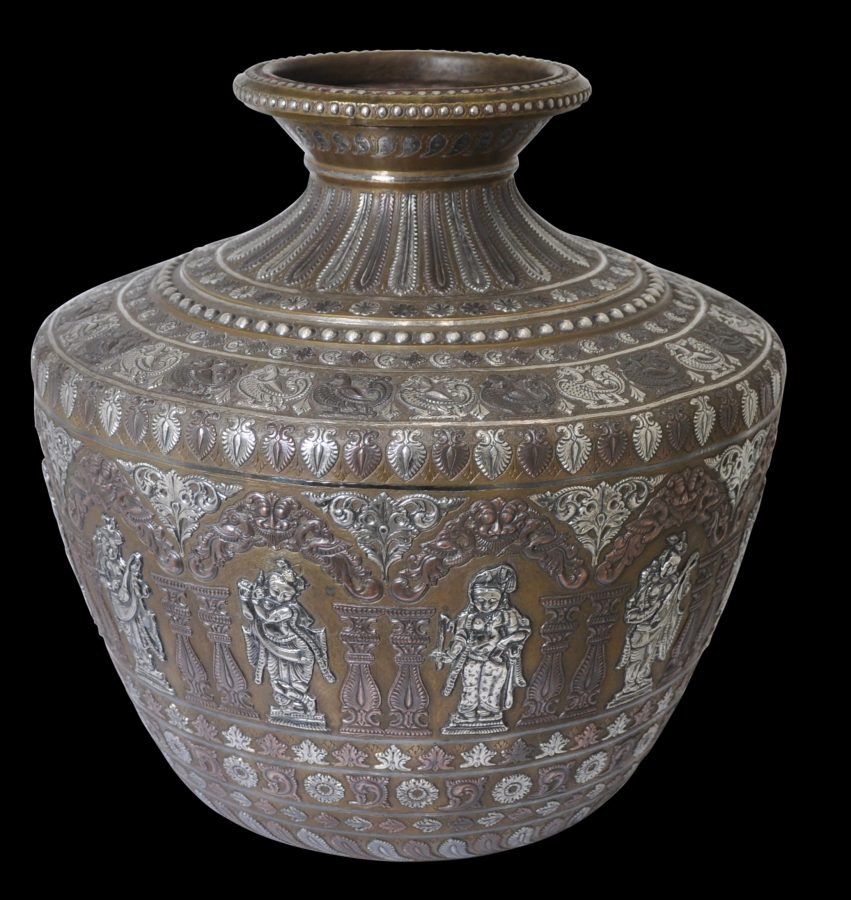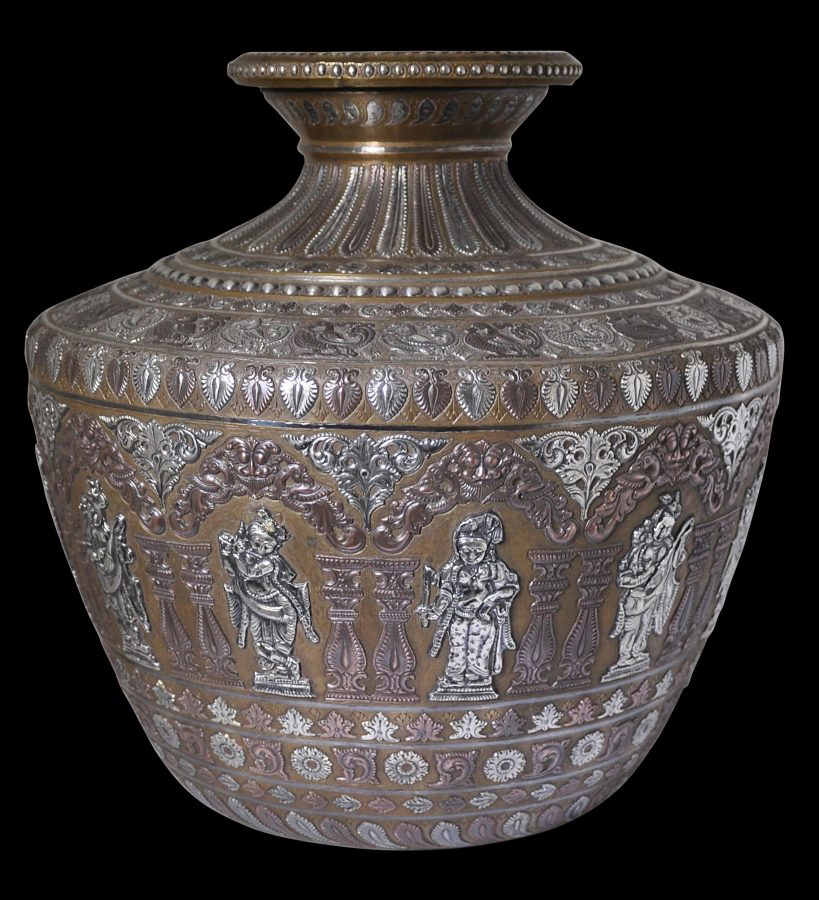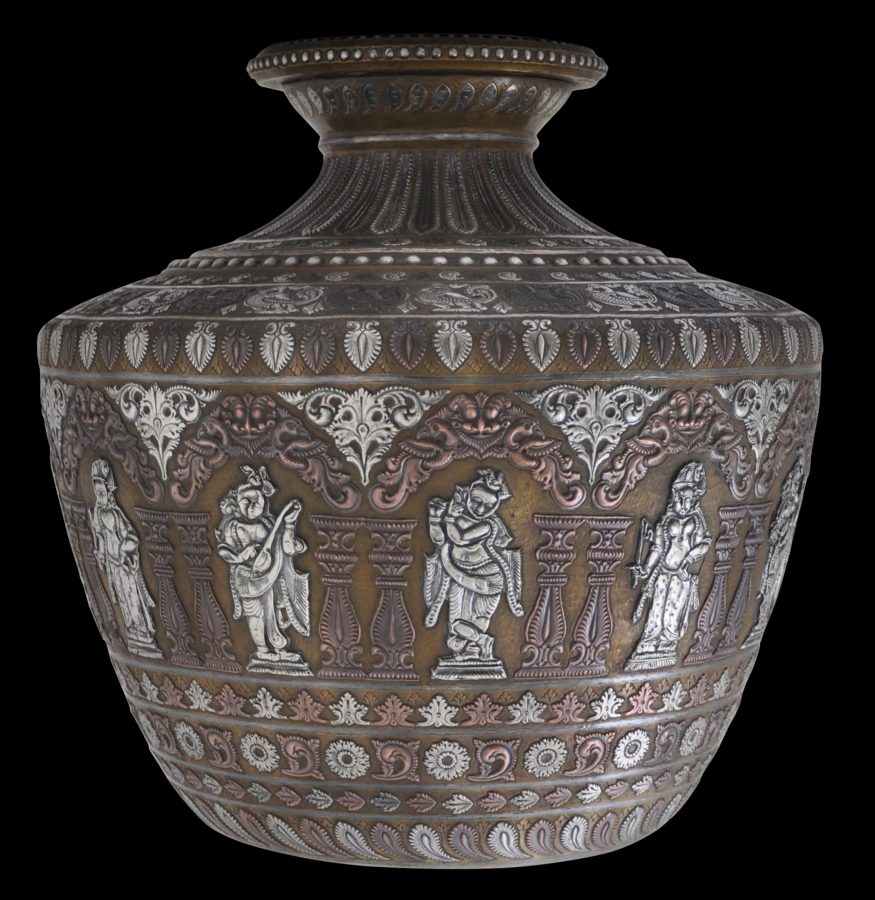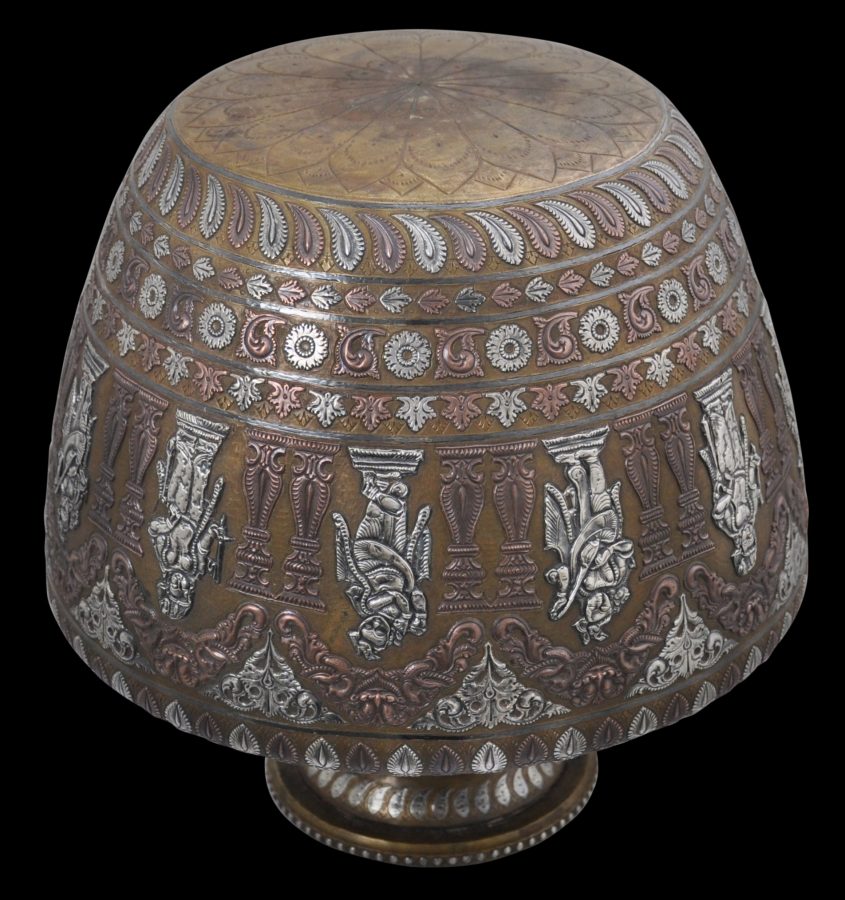This large and impressive water vase or lota is the finest example of this type of Tanjore work that we have seen. It comprises a large lota-shaped vase of brass that has been overlaid with alternating copper and silver chased plaques. (This type of work is known as Tanjore work, after the south Indian city where much of this work was executed.)
The vase has a flat bottom and sides that taper out to a wide shoulder. From here, a short neck rises to a widening rim.
The base is engraved with a lotus flower motif.
The copper and silver plaques are in the form of sacred swans (hamsas), adorsed parrots, flowers, columns, and deities playing musical instruments.
The depictions on the main plaques are believed to relate to those seen carved in relief on rock on the façade off the Great Temple (Brihadisvara) in Tanjore.
The vase is in excellent condition. There is minor flattening to some of the silver plaques and very minor loss to one or two of them. But this is relatively minor for surviving Tanjore work.
References
Birdwood, G., The Industrial Arts of India, 1880.
Chakravarthy, P., Thanjavur: A Cultural History, Niyogi Books, 2010.
Michell, G., & I. Viswanathan Peterson, The Great Temple at Thanjavur, Marg, 2010.


